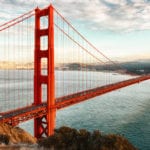 History
History  History
History  Weird Stuff
Weird Stuff 10 Superstitious Beliefs That Once Consumed Entire Cultures
 History
History 10 Bizarre Friendly Fire Incidents in Military History
 Technology
Technology 10 Modern Technologies That Accidentally Imitate Ancient Magic
 Mysteries
Mysteries 10 Mysteries of the Human Genome
 Weird Stuff
Weird Stuff 10 Things So Rare They’ve Only Been Found Once
 History
History 10 Legends Whose Last Moments Undid Their Glory
 Health
Health 10 Futuristic Ideas to Treat Common Medical Problems
 Weird Stuff
Weird Stuff Ten Surreal Attempts to Reverse Baldness
 Facts
Facts 10 U.S. Government Contingency Plans for the Unthinkable
 History
History 10 Odd Things Colonial Americans Kept at Home
 Weird Stuff
Weird Stuff 10 Superstitious Beliefs That Once Consumed Entire Cultures
 History
History 10 Bizarre Friendly Fire Incidents in Military History
Who's Behind Listverse?

Jamie Frater
Head Editor
Jamie founded Listverse due to an insatiable desire to share fascinating, obscure, and bizarre facts. He has been a guest speaker on numerous national radio and television stations and is a five time published author.
More About Us Technology
Technology 10 Modern Technologies That Accidentally Imitate Ancient Magic
 Mysteries
Mysteries 10 Mysteries of the Human Genome
 Weird Stuff
Weird Stuff 10 Things So Rare They’ve Only Been Found Once
 History
History 10 Legends Whose Last Moments Undid Their Glory
 Health
Health 10 Futuristic Ideas to Treat Common Medical Problems
 Weird Stuff
Weird Stuff Ten Surreal Attempts to Reverse Baldness
 Facts
Facts 10 U.S. Government Contingency Plans for the Unthinkable
10 Lesser-Known Places That Deserve National Park Status
National parks are one of America’s greatest and environmentally worthwhile achievements. As many know, the first national park to be established—likely one of the first in the world—was Yellowstone National Park in 1872. This amazing park lies mostly in Wyoming and covers over 2.2 million acres. After its creation, President Theodore Roosevelt would build on this and establish five more national parks and 18 national monuments.
Today, the U.S. is home to 63 national parks for visitors to enjoy. However, there are many other sites and natural wonders that are deserving of federal park status but, for one reason or another, have not been protected under the National Park System. Since there are so many amazing natural wonders in the U.S. and not enough space to list them all, we’ll focus on states that currently do not have a national park but definitely have a contender.
Related: 10 Weirdest Life Cycles In Nature
10 Mobile-Tensaw Delta, Alabama
One of the least talked about but most biologically diverse places in the U.S. is the Mobile-Tensaw Delta. It has been called America’s Amazon. The area is the second-largest delta in the U.S.—after the Mississippi. It contains one of the highest densities of different turtle species in the world, and scientists suspect that there is still flora and fauna in the area waiting to be discovered.
Apart from its natural wonders, the area also contains many historical sites that have been lost to time and swallowed up by the vast swampland. For example, it was the site of the last major battle of the Civil War, fought at Fort Blakely after Lee’s surrender at Appomattox. It also contains one of the largest discovered Native American mounds on the Gulf Coast. Unfortunately, the area is unlikely to become a national park anytime soon, as a 2016 push to fold the area into the National Park System stalled.[1]
9 Smoky Hills, Kansas
Many might think of flat prairies when thinking of Kansas, but the state is also home to canyons, rivers, and streams. The Smoky Hills region in the north-central part of the state was formed during the Cretaceous Period and includes craggy canyons and streams made up of sandstone, limestone, and chalk.
With so much geological history, the area also sports some strange rock formations, such as mushroom rock near Kanopolis State Park. The area’s rolling hills, canyons, and wetlands are definitely usually overlooked when one thinks about Kansas. Still, if the state was to be approved for a national park, this area would definitely be in contention.[2]
8 Natchez Trace, Mississippi and Tennessee
Though administered by the National Park Service, the 444-mile Natchez Trace Trail that meanders through Mississippi and north into Tennessee is technically considered a “parkway.” Visitors can drive, bike, or hike along the road and the surrounding forests, which follow a trail used for centuries by Native Americans and then early settlers.
Former President Thomas Jefferson widened the corridor in order to link Natchez, Mississippi, to Nashville and encourage expansion. The original trail even contains a marker for the grave of Meriwether Lewis (of Lewis and Clark Expedition fame). If it so wanted, the state of Mississippi would probably have no problem convincing the National Park Service to create a national park around the historic parkway and surrounding forests.[3]
7 The Adirondacks, New York
Located in upstate New York, the Adirondacks is a region containing over 30,000 square miles of rivers and streams. The park itself is administered by the state of New York, and while you might have heard of the area, did you know that the park is larger than Yellowstone, Glacier, the Everglades, and the Grand Canyon National Parks combined?
Almost half of the land in the park is owned by the state, while just over 55% is privately owned. However, all of the land within, including private land, must adhere to a strict set of development rules that are meant to protect the park. With rivers and forests, you can enjoy nearly 2,000 miles of hiking trails and other outdoor adventures. Paired with small towns and farmland, the area also boasts numerous historic sites, including forts, museums, and even the Olympic Center in Lake Placid.[4]
6 The Apostle Islands, Wisconsin
There are 22 islands near Bayfield Peninsula in Lake Superior. Twenty-one of those islands belong to a national lakeshore in Wisconsin. These islands encompass an area of 720 square miles (Link 11), offering adventurers caves to explore, miles of coastline to kayak, and 108 square miles of land and forest to hike.
The shores of these jewel-like islands also mark the northwestern limits of hardwood-white pine. The area hosts bald eagles, black bears, the endangered American marten, and numerous aquatic life and migratory birds. But no matter the season, the islands always offer spectacular views of one of the most pristine Great Lakes.[5]
5 Nebraska National Forests and Grasslands
What is essentially a collection of two national forests and three national grasslands starting in Nebraska and spanning into South Dakota make up the Nebraska National Forests and Grasslands.
One area of forest inside this vast expanse makes up some 90,000 acres and is actually the largest hand-planted forest in the world. Yeah, that’s right, much of this forest was planted by humans. In 1890, a member of the University of Nebraska suggested that the federal government plant trees in order to stem erosion and provide sanctuary for wildlife and a source of lumber for locals.
The federal government apparently thought it was a good idea and a year later established an experimental plot of land that has grown into the forest that exists today. While not technically “natural,” it makes one wonder what kind of positive precedent for the future it would set to elevate this area into national park status.[6]
4 Hammersley Wild Area, Pennsylvania
Spanning an area of almost 30,000 acres, this wild area is some of the most pristine forested regions in the state of Pennsylvania, if not the most. The brochure even warns those looking to hike the area to carry topographic maps as getting lost here could “have serious consequences.”
The region contains old-growth and hardwood forests, but it is perhaps more notable for what is absent. There are no roads inside Hammersley, meaning the only thing you are likely to hear while camping or hiking is the sweet, sweet sound of the wilderness.[7]
3 Kisatchie National Forest, Louisiana
Located in north-central Louisiana, Kisatchie National Forest is over 600,000 acres and contains old-growth pine—the type that used to cover most of the southeast U.S. It was even featured on the America the Beautiful quarter series that highlighted various national parks and other natural resources in the U.S.
The forest contains over 100 bird species year-round, Louisiana black bears, and escaped wild horses. Almost logged completely in the early twentieth century, the area is named after a local tribe of Kichai Native Americans, who called themselves “Kitsatchie.” The park offer camping (both in camps and more primitive), fishing, hunting, hiking, and numerous other outdoor adventures to keep everyone busy.[8]
2 The Green Mountains, Vermont
Green Mountains National Forest is another forest on this list that could easily be elevated to National Park status. The forest spans some 400,000 acres and 550 square miles, with the park established in 1932.
The area the forest gets its name from—the Green Mountains—is part of the Appalachian Mountain chain. They run north-south through the center of Vermont and include peaks rising over 3,000 feet in height. The national forest was established to protect many of these verdant peaks and their hardwoods. With its diverse vegetation and focus on forest stewardship, the park—along with its sister park, the Finger Lakes National Park in New York—functions as a research and educational center. It also has various recreational activities along its many trails.[9]
1 Atchafalaya, Louisiana
The last area on our list, the Atchafalaya Basin, is the country’s largest swamp. It spans an area of almost one million acres and stretches 140 miles to the Gulf of Mexico. Located in Louisiana, the basin is larger than the Florida Everglades and is home to the largest nesting population of bald eagles in the southern U.S.
The basin contains the largest contiguous hardwood forest in the U.S. and an abundance of wildlife. Situated west of New Orleans, the basin would probably be covered by the ever-changing Mississippi River by now if it weren’t for controls put in place along the northern edge of the basin. However, the basin takes in about 30% of the water from the Mississippi Rivers as it flows into the Gulf. The waters provide essential habitat for more than 300 species of wildlife and 100 different aquatic species, as well as a rich diversity of native plants.
You can enjoy various activities while visiting this bayou, including paddling, biking, golfing, birding, and camping. Oh, and don’t forget a swamp tour![10]




![11 Lesser-Known Facts About Mass Murderer Jim Jones [Disturbing Content] 11 Lesser-Known Facts About Mass Murderer Jim Jones [Disturbing Content]](https://listverse.com/wp-content/uploads/2020/09/jonestown2-copy-150x150.jpg)



